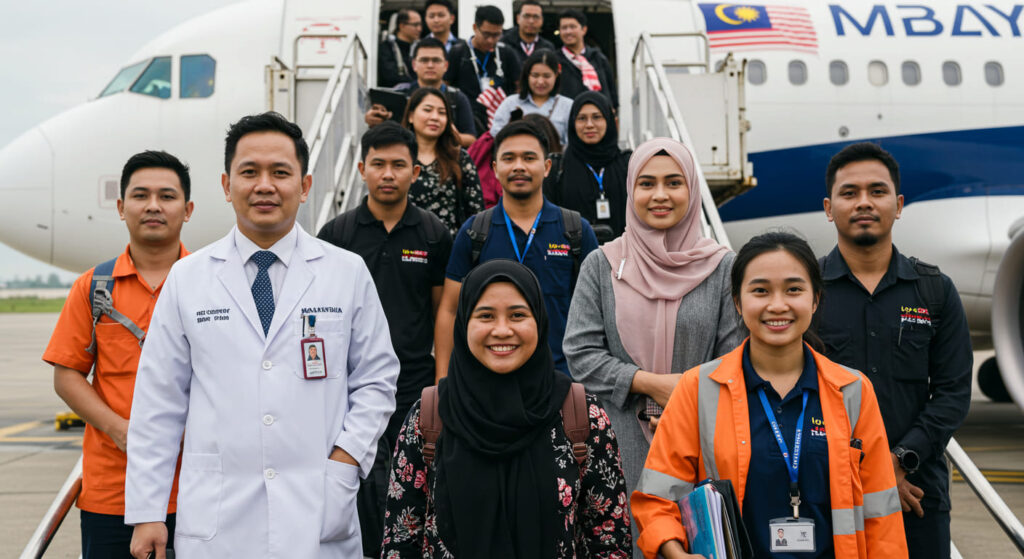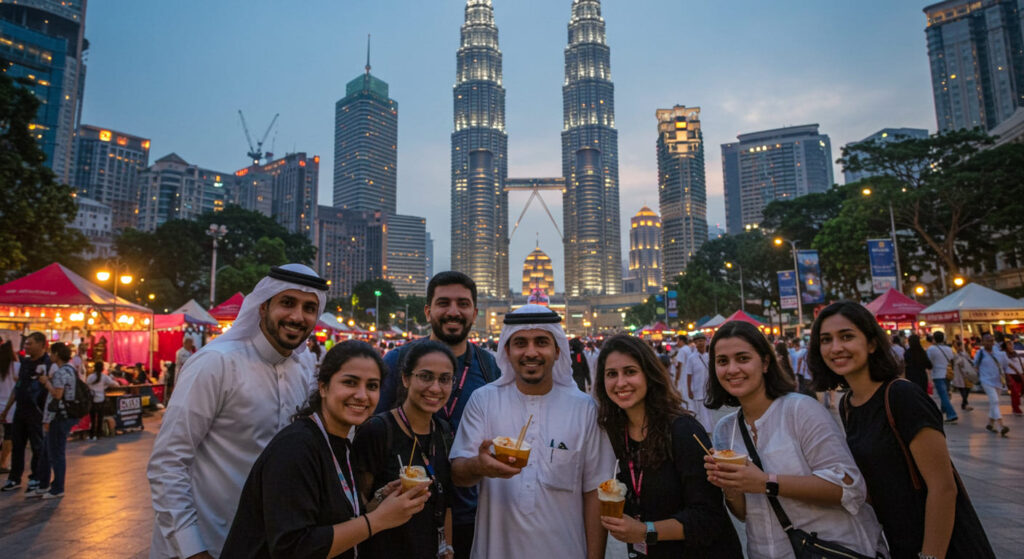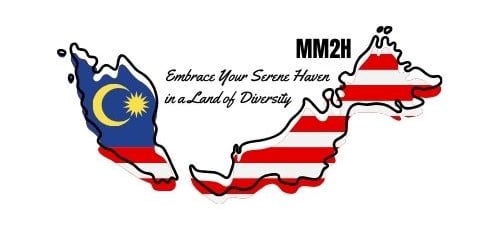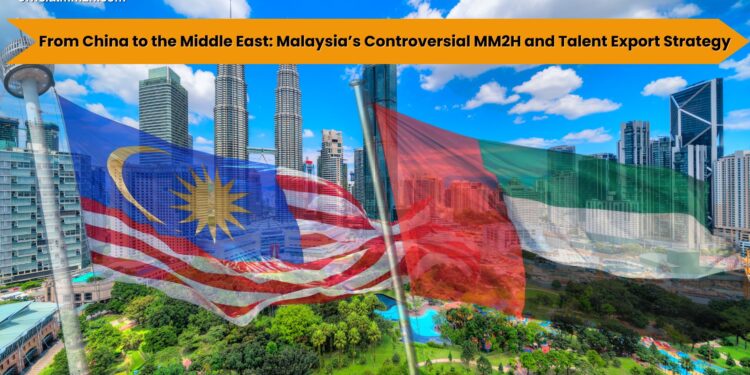Malaysia Strategic Leap: Unveiling Opportunities with MY-UAE CEPA
Malaysia is on the brink of an economic transformation, leveraging the Comprehensive Economic Partnership Agreement (MY-UAE CEPA) with the United Arab Emirates. This landmark agreement is more than just a trade deal; it’s a strategic pivot to unlock new markets, enhance bilateral ties, and position Malaysia as a global economic powerhouse. From exporting skilled workforce to reshaping the Malaysia My Second Home (MM2H) program, the opportunities are vast and far-reaching.
MY-UAE CEPA: A Game-Changer for Bilateral Trade
The MY-UAE CEPA is set to increase trade between Malaysia and the UAE by an impressive 60% within the next five years. This milestone underscores the UAE’s confidence in Malaysia’s economic potential, further cemented by Prime Minister Datuk Seri Anwar Ibrahim’s successful diplomatic visit. The agreement paves the way for collaboration in high-value sectors, including green technology, oil and gas, and advanced manufacturing.
However, the agreement’s significance extends beyond bilateral trade. It positions Malaysia as a key player in the Gulf Cooperation Council (GCC), opening doors for similar agreements with other member states like Saudi Arabia, Qatar, and Oman. This partnership offers Malaysia a golden opportunity to integrate deeper into the Middle Eastern economy, bringing mutual benefits and shared prosperity.
Exporting Malaysia’s Skilled Workforce to the Middle East

One of the standout opportunities arising from MY-UAE CEPA is the potential to export Malaysia’s highly skilled and semi-skilled workforce to the Middle East. Unlike countries such as Bangladesh or Indonesia, which primarily export labor for 3D jobs (dirty, dangerous, and difficult), Malaysia’s focus is on high-value industries.
According to Datuk Dr. Madeline Berma, a Fellow of the Academy of Sciences Malaysia, Malaysia’s workforce is uniquely positioned to excel in the Middle East. Graduates in fields such as healthcare, hospitality, and education can contribute significantly to these sectors in Gulf countries.
For instance:
- Healthcare: Malaysian nurses are renowned for their expertise and high standards, making them ideal candidates for the Middle East’s expanding healthcare industry.
- Hospitality: With the region’s booming luxury tourism sector, Malaysian hotel managers bring world-class skills and experience to meet growing demands.
- Education: Malaysian teachers and lecturers are well-equipped to support the development of cutting-edge education systems in GCC countries.
Exporting skilled professionals not only strengthens Malaysia’s global reputation but also contributes to economic growth through remittances and knowledge exchange.
Revamping the MM2H Program for the Arab Market

The Malaysia My Second Home (MM2H) program has traditionally focused on East Asian countries like China and South Korea. While these markets have been successful, there’s a growing realization that Arab nationals represent an untapped demographic with immense potential.
Arab tourists already consider Malaysia a premium destination. They tend to spend more than the average tourist and often stay for extended periods. By tailoring the MM2H program to suit their preferences, Malaysia can attract high-net-worth individuals and families to invest in real estate, tourism, and local businesses.
For example, offering homes in exclusive locations with amenities aligned with Arab lifestyles—such as privacy, luxury, and proximity to halal services—could significantly boost the program’s appeal. This shift not only diversifies Malaysia’s target audience but also deepens its economic ties with the Middle East.
Malaysia’s Role as ASEAN Chair and Regional Leader
As Malaysia prepares to chair ASEAN in 2025, the timing of MY-UAE CEPA couldn’t be better. This agreement aligns with Malaysia’s vision of fostering stronger regional integration and exploring new trade opportunities.
Malaysia’s leadership in ASEAN presents a unique opportunity to position itself as a bridge between Southeast Asia and the Middle East. By sharing the benefits of its partnership with the UAE, Malaysia can encourage other ASEAN nations to collaborate on Middle Eastern ventures, creating a ripple effect of growth and development across the region.
Moreover, the technology transfer and knowledge-sharing potential from Middle Eastern collaborations could elevate Malaysia’s role as a leader in sustainable development and innovation.
Diversifying Malaysia’s Economy with High-Value Industries
The MY-UAE CEPA also allows Malaysia to pivot towards high-value industries, reducing reliance on traditional sectors like palm oil and rubber. Key areas of focus include:
- Green Technology: With the UAE investing heavily in renewable energy, Malaysia can position itself as a partner in advancing sustainable solutions.
- Oil and Gas: Collaborations in this sector remain vital, particularly in knowledge-sharing and joint ventures.
- Advanced Manufacturing: Malaysia’s expertise in this field can complement the UAE’s efforts to diversify its economy beyond oil.
These industries not only align with Malaysia’s long-term economic goals but also create high-paying jobs and opportunities for local talent.
Overcoming Challenges and Concerns
While the MY-UAE CEPA and related initiatives offer immense opportunities, they also come with challenges. One concern is the potential for a brain drain as skilled professionals seek opportunities abroad. To address this, Malaysia must ensure that domestic industries remain competitive and attractive for top talent.
Additionally, shifting the MM2H program to focus on Arab nationals may raise questions about inclusivity and balance. It’s crucial to manage this transition carefully, ensuring that all target markets feel valued and welcomed.
A Vision for Malaysia’s Future
The MY-UAE CEPA represents more than a trade agreement; it’s a blueprint for Malaysia’s future. By exporting skilled workforce, revamping the MM2H program, and deepening ties with the Middle East, Malaysia is setting itself up for sustained growth and global recognition.
As Malaysia takes on the role of ASEAN Chair in 2025, its leadership will be instrumental in fostering collaboration and innovation across the region. The benefits of these partnerships will not only elevate Malaysia’s economy but also strengthen ASEAN’s position on the global stage.
Conclusion
Malaysia’s journey with the MY-UAE CEPA marks the beginning of an exciting era. From trade and investment to workforce exports and tourism, the opportunities are boundless. As Malaysia pivots toward the Middle East, it’s clear that this strategy is more than just economic—it’s a statement of intent to thrive in a rapidly changing world.




